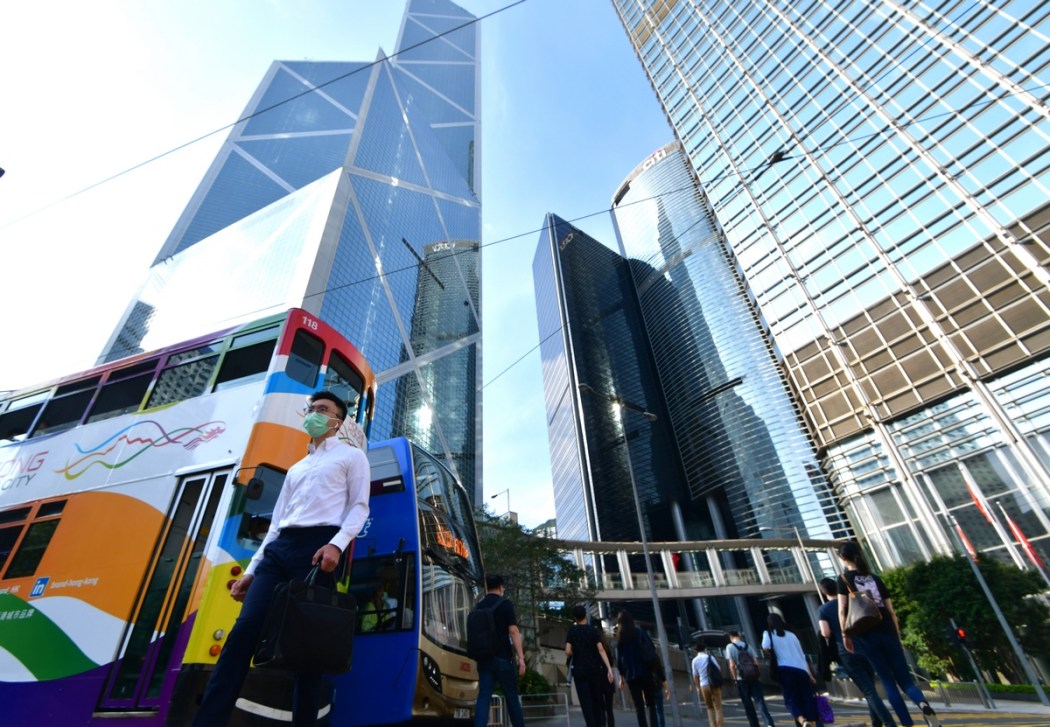The number of US firms using Hong Kong as a regional base has dropped sharply in the last decade while the number of mainland Chinese companies with a presence in the city more than doubled, according to official figures.

The statistics from the Census and Statistics Department came after commerce chief Edward Yau last month rejected claims that Hong Kong was suffering an exodus of foreign capital. He cited a rise in the number of foreign companies – which includes mainland Chinese firms – based in the city.
The department tallies the number of foreign firms in the city as of June 1 every year, with the figure broken down into regional headquarters, regional offices and local offices.
As a percentage of the total number of foreign firms using Hong Kong as their regional headquarters, US companies dropped from 23.5 per cent to 17.4 per cent between 2011 and 2021, according to the department’s statistics.
The city had 61 fewer regional headquarters for US companies in 2021 (254) than in 2011 (315). Local newspapers reported that the 2021 figure is the lowest since 2003.
The number of regional headquarters for Japanese firms also dropped, from 222 – or 16.6 percent – in 2011 to 210 – 14.4 percent – in 2021.
US remains at the top
However the percentage of mainland Chinese companies with regional headquarters in Hong Kong has soared since 2011 from just 7.2 per cent to 17.2 per cent, close behind the percentage for US firms. The percentage of British and French firms with regional headquarters in Hong Kong rose slightly during the same period.
The number of foreign company offices of all types – regional headquarters, regional offices and local offices – has risen overall since 2011. But the percentage of non-Chinese foreign companies has dropped since 2011, while the number of mainland firms soared from 805 to 2,080 in the past 11 years.
Yau last week said Hong Kong was hosting a record number of 9,049 foreign and mainland firms, an increase of about 10 per cent between 2017 and 2021.
A breakdown of the figure shows that the number of mainland Chinese firms jumped by 64 per cent while other foreign firms saw a slight drop over the same period.
Law Ka-chung, an adjunct lecturer in finance and economics at City University of Hong Kong, said the number of firms may not reflect the actual business environment, as it was easy to register a company on paper in Hong Kong.

“The number of companies may not be proportional to the amount of business they do here, so [we] also need to look at their turnover,” he told HKFP.
The growth of mainland Chinese firms in the city may also include those wishing to move capital out of the mainland using Hong Kong companies as vehicles, he added.
Meanwhile University of Hong Kong business school lecturer Vera Yuen said the changing number of firms from the US or the mainland mostly reflects the relative sizes of the two economies. “In the past ten years, China has developed fast and its economy grew in size… The number of firms that set up in Hong Kong reflect the size of their economies,” she said. “This is what would happen even without particular [policy] barriers or preferential treatment.”
Continued strict quarantine requirements under Covid-19 for incoming travellers will also pile up costs to foreign businesses that hire expatriates, leading businesses to relocate staff to branches in other cities, Yuen added.
Support HKFP | Policies & Ethics | Error/typo? | Contact Us | Newsletter | Transparency & Annual Report | Apps
Help safeguard press freedom & keep HKFP free for all readers by supporting our team

LATEST FROM HKFP
HKFP has an impartial stance, transparent funding, and balanced coverage guided by an Ethics Code and Corrections Policy.
Support press freedom & help us surpass 1,000 monthly Patrons: 100% independent, governed by an ethics code & not-for-profit.










